Dell XPS 13 Review
by Brett Howse on February 19, 2015 9:00 AM EST- Posted in
- Laptops
- Dell
- Ultrabook
- Broadwell-U
- XPS 13
Gaming Performance
Normally on an Ultrabook we would not dedicate an entire page to gaming performance, because the integrated GPUs do not perform very well on our gaming tests. However, with this being our first example of Broadwell-U, it is a good time to revisit this and see how the new graphics capabilities of Broadwell compare to the Haswell processors.
With the Core i5-5200U in both of the XPS 13s that we received, we have 24 execution units, compared to only 20 on Haswell-U. In addition, the 14nm process should help with throttling. The FHD model (1920x1080) arrived with a two 2GB memory modules and the QHD+ version came with 2 x 4GB.
First, let's look at the synthetic benchmarks, starting with 3DMark and then moving on to GFXBench.
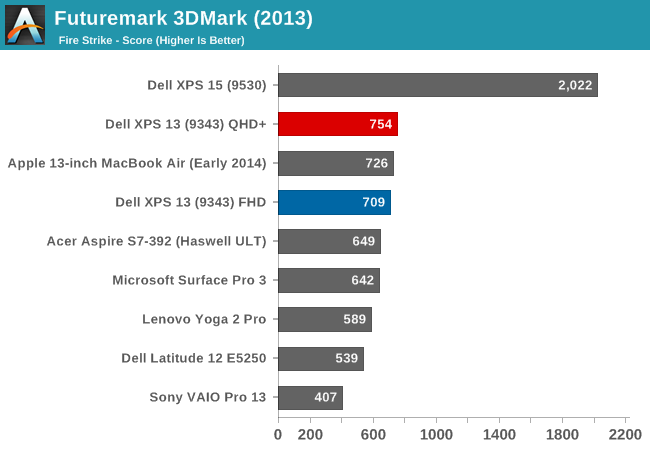
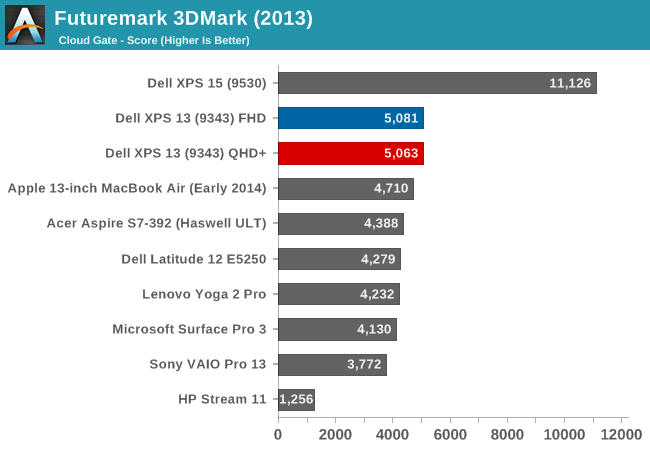
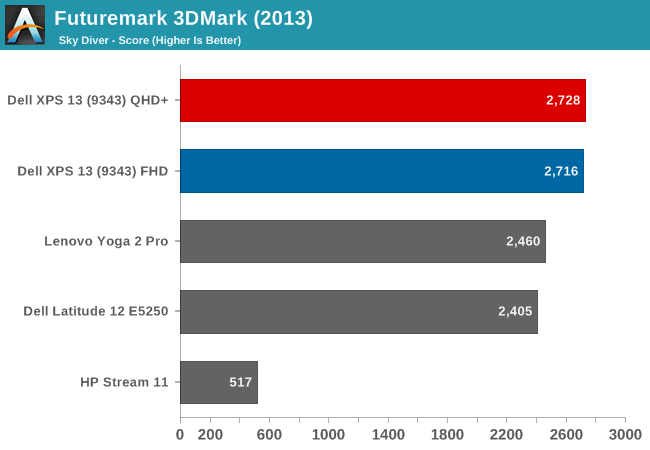

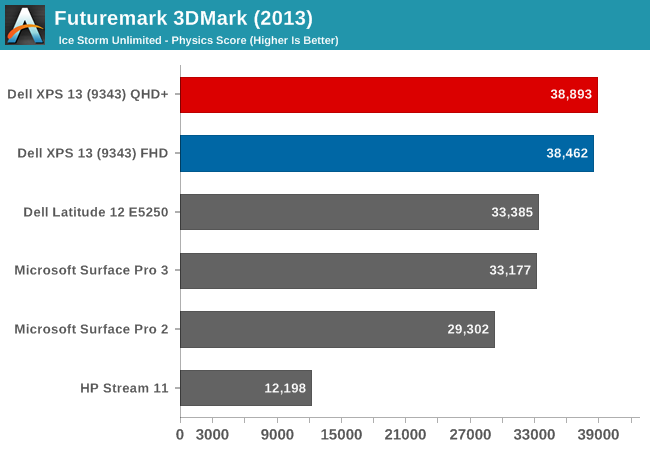
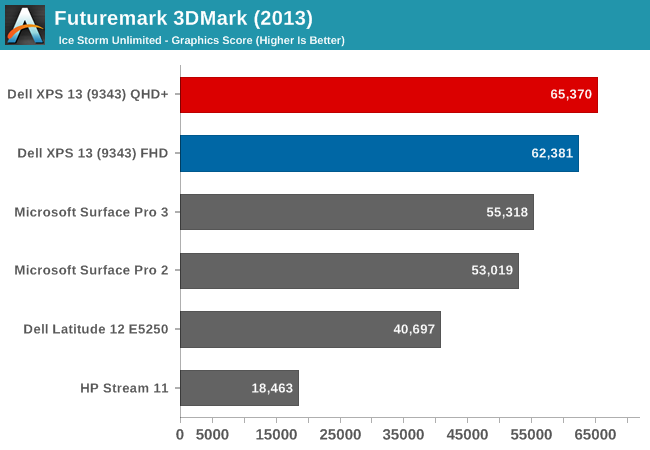
The 3DMark results begin to show the increased GPU performance of the Gen8 graphics. Broadwell-U outperforms all of the Haswell-U parts on all of the tests, and the QHD+ model gave a fraction more performance as well in a few tests.

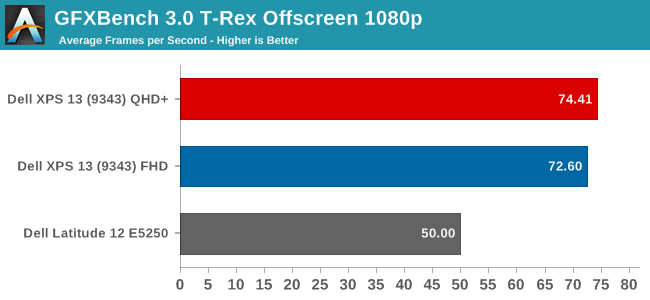

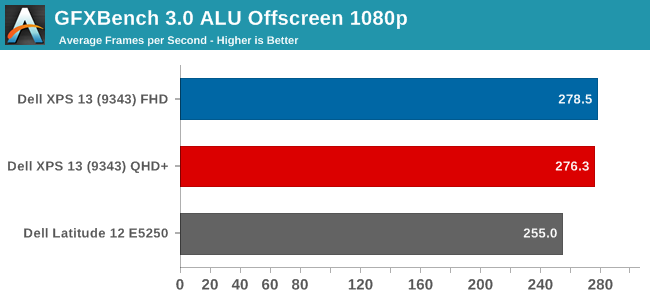
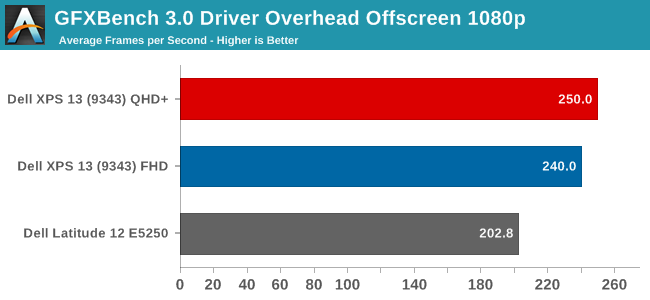
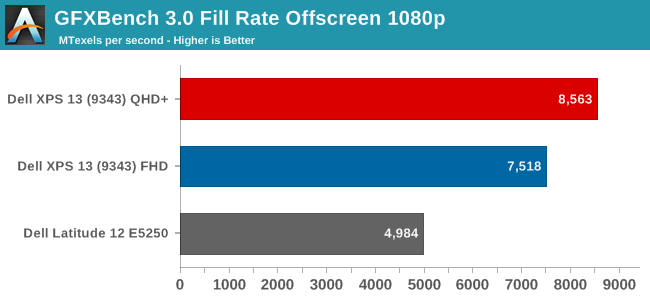
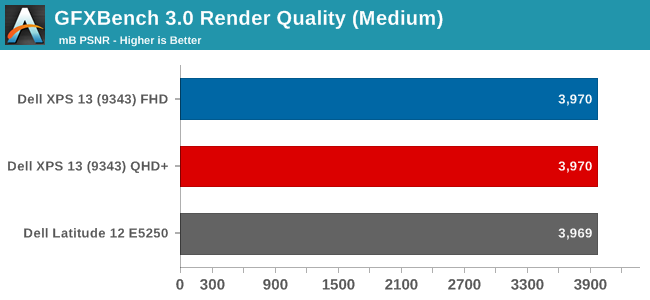
The initial results for the new GPU look pretty good, with the new GPU soundly beating the Haswell-U parts. The HP Stream 11, with just 4 EUs, trails quite far behind. GFXBench is one of our newer benchmark choices for Windows 8, and we will add more data as we get a few more devices to test.
Next, let's look at our gaming benchmarks. Due to the low performance of the integrated GPUs, I just ran our gaming tests at the Value (1366x768 ~Medium) settings.

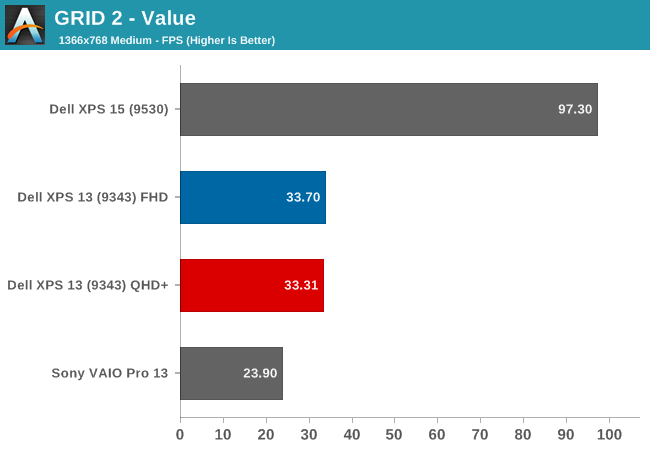

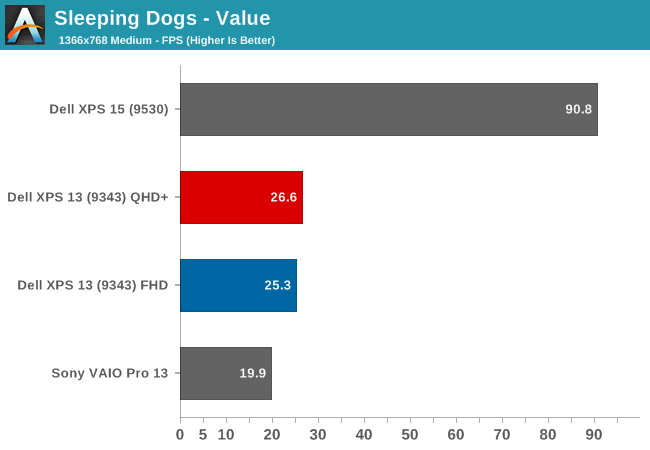
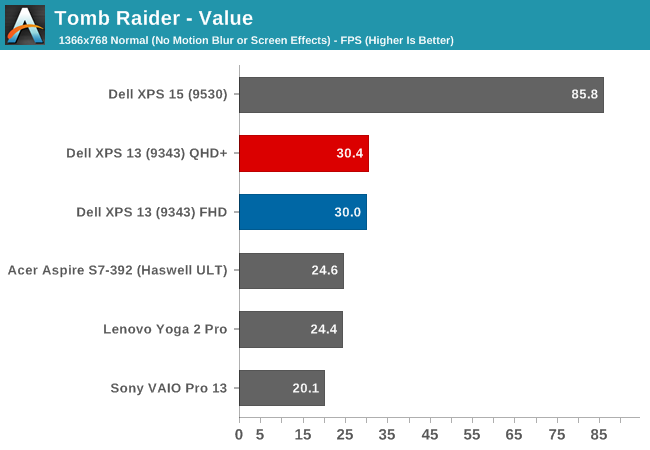
Here we can see once again that the new GPU is certainly stronger, but it is still not quite enough to make any of these games very playable on our Value settings. The Dell XPS 15, with its discrete GPU, carries a huge lead over the integrated GPU offerings. Still, the new Gen8 Graphics with more execution units per processor, as well as a change to the architecture of each execution unit, has made a healthy improvement. The new GPU has only eight EUs per sub-slice now, as compared to ten in Haswell-U, which help in many workloads. Ian has a nice writeup on the changes.
However, our gaming benchmarks are not tested at the lowest possible settings. All of the benchmarks start at 1366x768 with medium settings, so let's drop down another notch.
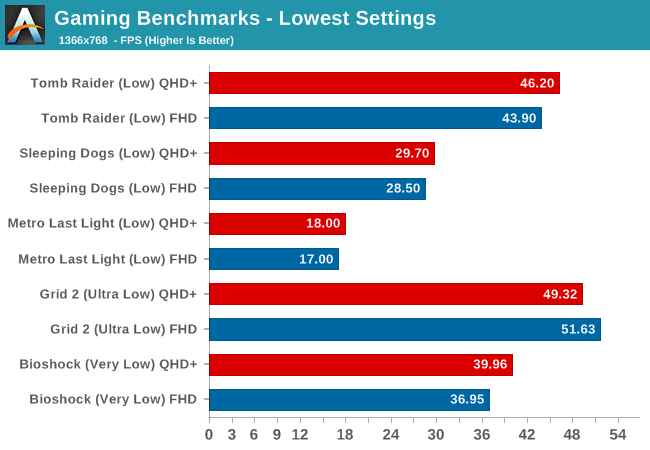
By setting the games to their lowest settings, some of them are now playable. We are still a long ways off of the performance of a discrete GPU, but slowly integrated graphics are improving.
Finally, we have a new gaming benchmark to add to our repertoire. Anand first used the DOTA 2 bench for the Surface Pro 3 review and it will be our go-to benchmark for devices like this without a discrete GPU. Our Value setting will be 1366x768 with all options off, low quality shadows, and medium textures. Midrange will be 1600x900 with all options enabled, medium shadows, and medium textures, and Enthusiast will be 1920x1080 with all options maxed out.
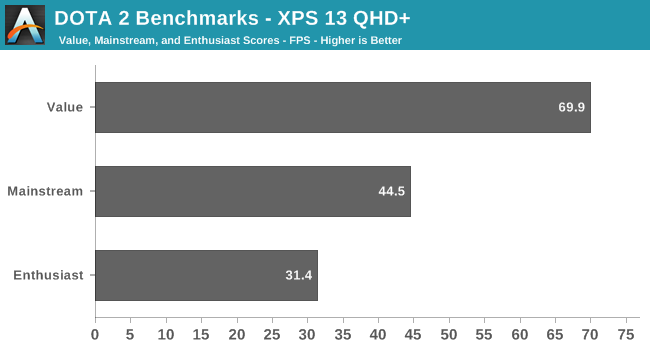
We do not have any other comparison points at the moment, but it is very clear that a game like DOTA 2 is very playable on a device with an integrated GPU. Frame rates, even with good settings, are very reasonable.
So Broadwell has raised the stakes again, but the end result is Intel's Integrated GPU is still not going to let you play AAA titles with good frame rates. Hopefully we can get some good comparisons between Broadwell-U and the AMD APUs in the near future. It will also be interesting to see what happens on the higher wattage Broadwell parts, some of which will contain significantly more EUs.










201 Comments
View All Comments
repoman27 - Thursday, February 19, 2015 - link
Peter Bright over at Ars mentioned in the comments to his review that Dell told him the 512 GB SSD option was PCIe based. Which would be nice, but it also means that the M.2 slot supports both SATA 6 Gb/s and PCIe if you want to upgrade yourself.And are we seriously OK with the GPU performance here, pushing 4.44x the pixels of the 13-inch MacBook Air with HD Graphics 5500 (GT2)? Not noticeably laggy or overwhelmed during general usage? This just seems crazy since we're talking 25% more pixels than the 15-inch MacBook Pro with Retina Display with roughly half the GPU power.
Also, any idea if the DP port is Dual-Mode, or if it supports DP 1.2 HBR2 and MST? I reckon it should...
voicequal - Thursday, February 19, 2015 - link
It is DP 1.2, but maxes out at 3840 x 2160 @ 60 Hz on the Broadwell U-series processors. Supports MST with up to 3 independent displays (including the built-in display - same as Haswell). Don't know about dual-mode. https://software.intel.com/en-us/articles/quick-re...repoman27 - Thursday, February 19, 2015 - link
Thanks for the response. I was more curious if Dell's implementation as shipped with currently available Intel graphics drivers actually supported MST hubs or TMDS modes though. Sometimes the capabilities Intel lists for their GPUs don't always materialize straight away in shipping hardware / drivers.JarredWalton - Thursday, February 19, 2015 - link
For Windows use, Intel's HD 4600 and above generally run fine in my experience, even with a 4K display. Which isn't to say that gaming or certain other tasks work properly (H.265 video decoding I've heard can be too much for the BDW-U systems, not sure if that's still true), but no one buys a system with Intel GPU for gaming. It can handle it in some cases at lower quality settings, but that's about it.Colin1497 - Thursday, February 19, 2015 - link
So I'm in the market for a new travel laptop and I really like the idea of this, but it's actually maybe smaller than I want. Can I have an XPS 15 in a 13" chassis, please?Arbie - Thursday, February 19, 2015 - link
@Uplink10 - 13" is hardly too small for watching movies! Personally, I can enjoy films on a 10" netbook (and actually also on an 8" tablet). This laptop would be terrific in that regard.rpjkw11 - Thursday, February 19, 2015 - link
I would seriously consider this if it had a 15" screen. My 17", 10 pound laptop gets heavy rather quickly; a lighter alternative would be welcomed when something lighter, but less powerful, would serve.mac2j - Thursday, February 19, 2015 - link
There's nothing preventing you from swapping out the 256GB SSD for 1 GB right? Nothing proprietary that would make this an issue?mac2j - Thursday, February 19, 2015 - link
1 TB - sorry.repoman27 - Thursday, February 19, 2015 - link
I don't think there are any M.2 2280 1 TB SSDs out yet. I think they only accommodate 4 NAND packages, which isn't enough for 1 TB at current densities / # of dies per package.